In the wild world of freelancing, time is the ultimate currency. Juggling multiple clients, deadlines, and the occasional Netflix binge can feel like trying to tame a cat in a room full of laser pointers. Without solid time management, chaos reigns, and productivity takes a nosedive faster than a poorly planned coffee run.
Mastering the art of time management isn’t just a nice-to-have; it’s essential for freelancers who want to thrive. With the right strategies, they can turn their chaotic schedules into well-oiled machines. Imagine transforming those frantic work hours into focused bursts of creativity while still leaving time for that much-deserved snack break. Let’s dive into the secrets that can help freelancers reclaim their time and boost their success—because who says you can’t have fun while getting things done?
Table of Contents
ToggleUnderstanding Freelancer Time Management
Freelancers face unique challenges in managing their time. Effective time management promotes productivity while balancing client demands and deadlines.
Importance of Time Management for Freelancers
Time management significantly impacts a freelancer’s success. It allows individuals to meet client expectations while maintaining a healthy work-life balance. Efficient scheduling leads to increased productivity, enabling freelancers to complete tasks smoothly. As they juggle multiple clients, strategic time allocation becomes essential for meeting deadlines. Prioritizing tasks enhances their ability to focus on high-impact projects. Understanding priorities contributes to overall job satisfaction, reducing burnout and stress.
Common Challenges in Time Management
Freelancers often encounter various challenges in managing their time. Distractions from home, such as personal notifications or interruptions, can hinder focus. Setting boundaries becomes crucial when working in familiar environments. Additionally, estimating time for tasks can be difficult, leading to potential overcommitment. Burnout may result from inadequate breaks or excessive workloads. Moreover, irregular income cycles create pressure, causing freelancers to take on more work than manageable. The lack of a structured environment complicates effective time management further. Recognizing these challenges enables freelancers to develop better strategies for their workflows.
Effective Time Management Strategies
Freelancers can benefit significantly from implementing effective time management strategies. Clear goals and prioritization form the foundation of a productive schedule.
Setting Clear Goals and Priorities
Setting clear goals turns ambiguous tasks into actionable items. Prioritizing essential projects enables freelancers to focus on high-impact activities. They should define short-term and long-term objectives to maintain direction. Breaking larger tasks into smaller, manageable steps makes them less overwhelming. Using a priority matrix helps in identifying urgent versus important work. By establishing realistic deadlines, freelancers create accountability for themselves. Emphasizing consistent evaluation of progress supports continual improvement.
Utilizing Time Tracking Tools
Time tracking tools simplify the process of monitoring work hours. Utilizing these tools reveals insights into how time is spent on different tasks. Freelancers can identify time-wasting activities and address them accordingly. Integrating applications like Toggl or Clockify aids in maintaining focus. Generating reports provides a visual representation of time allocation across projects. Knowing where time is invested helps in adjusting schedules for optimal productivity. Adjustments based on tracked data lead to more accurate future planning.
Creating a Productive Work Environment
A productive work environment significantly enhances a freelancer’s time management. By carefully crafting the workspace, freelancers can boost focus and efficiency.
Minimizing Distractions
Distractions disrupt workflow and reduce productivity. Identifying common sources of interruptions is crucial. Social media notifications can wait; setting specific times to check them minimizes distractions. Additionally, keeping a tidy workspace lessens visual clutter and helps maintain concentration. Scheduling breaks can also provide necessary downtime without succumbing to distractions. Implementing techniques like the Pomodoro Technique encourages focused work sessions followed by short breaks, helping freelancers stay on task.
Organizing Your Workspace
An organized workspace fosters clarity and efficiency. Freelancers benefit from dedicating specific areas for work, separate from relaxation spaces. Keeping necessary tools and materials within reach supports productive workflow. Utilizing storage solutions like bins or shelves keeps items in order and readily accessible. Establishing a clean desk policy helps maintain focus, ensuring only essential items remain on the desk. Incorporating personal touches can enhance comfort, but avoiding visual clutter is key for optimal productivity. Regularly reassessing the workspace ensures it continues to meet evolving needs.
Work-Life Balance for Freelancers
Freelancers must prioritize work-life balance to enhance productivity and overall well-being. It’s essential to create clear boundaries between work and personal life.
Establishing Boundaries
Setting boundaries helps freelancers protect their time. They can define specific work hours and communicate availability to clients. This clarity reduces interruptions during personal time, allowing for a more focused work approach. Creating “do not disturb” signals during work hours also reinforces these boundaries. Additionally, freelancers benefit from designating a separate workspace to mentally transition between work and home activities.
Scheduling Breaks and Downtime
Incorporating breaks into the daily schedule is vital for maintaining energy levels. Short breaks increase focus and creativity, enhancing job performance. Freelancers might consider techniques such as the Pomodoro Technique, which alternates work sessions with timed breaks. It’s beneficial to schedule downtime for relaxation and hobbies, preventing burnout. Regularly planning leisure activities not only promotes mental health but also rejuvenates motivation for work tasks. By prioritizing breaks, freelancers sustain productivity throughout their work hours.
Mastering time management is crucial for freelancers striving to thrive in a competitive landscape. By implementing the strategies discussed, they can transform chaotic schedules into structured routines that enhance productivity. Establishing clear goals and priorities allows for focused efforts on high-impact tasks while minimizing distractions creates a conducive work environment.
Maintaining a healthy work-life balance is equally important. By setting boundaries and incorporating regular breaks, freelancers can protect their time and well-being. With these effective techniques, freelancers can not only meet client expectations but also enjoy a more fulfilling and sustainable work life.


